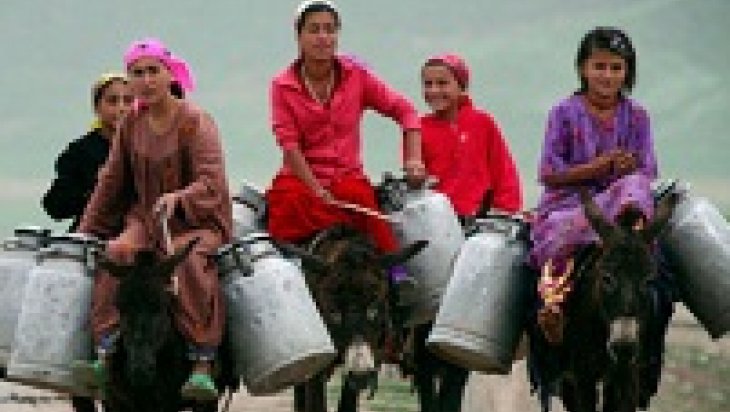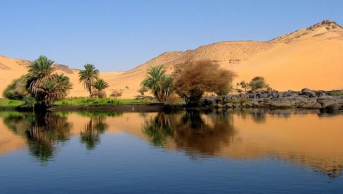Poisoning of Transboundary Water Management in Central Asia in Two Stages: The Soviet Plunder and the Introduction of Classical Westphalian State-Syst

Two developments had profound impacts on the fate of transboundary waters in Central Asia. First is related with the extensive use of water by Soviets throughout transboundary basins of Amu Darya and Syr Darya. Second is related with disappearance of the Soviet Union as a regulator of state of affairs in the region and birth of nation-states with renowndiversified interests.
Soviet system was effective at exploitative activities such as generating the greatest agricultural output regardless of the environmental damage this may cause. The preoccupation with gross figures, for instance, how much Soviet Union did increase the food production in a yearly basis, had terrible results for Central Asia. The most vivid example of this is the death of Aral Sea. Wasteful water use for cotton production in particular, was the biggest cause for rapid loss of the Aral Sea in a period not more than four decades. Aral Sea has become the symbol of the level of human induced damage that can be given to the environment. Also, being transferred with the winds, increased salinity in Uzbek plains have started to accelerate the glacial meltdown in regions thousands of kilometers away, like Tajikistan and Kyrgyzstan. Soviets’ legacy demonstrated itself also in how water is valued: in Soviet era water was free and some Central Asian countries still maintain this inefficient practice. Nevertheless, the Soviet plunder was not the worst yet the Central Asia has hitherto experienced. Ensuing stage has further complicated the case for transboundary waters of the region.
The demise of Soviet Union in late 1991 was applauded by the democratic world as this meant the end of a period of oppression for more than a dozen of nations. The so-called Westphalian states-system was expanding. For many, former republics of Soviets have now become independent states which would be able to determine their own future, possibly a better future. At the beginning, on 12 October 1991, the water ministers of Kazakhstan, Kyrgyzstan, Tajikistan, Turkmenistan, and Uzbekistan agreed to maintain the Soviet allocations of water. In February next year, they signed the Almaty Agreement which had as a primary goalof cooperation in the field of water management. So countries of the region were apparently aware of the approaching rivalry for limited water resources.
However, the initial wave of optimism proved wrong for the case of Central Asian countries with respect to management of water resources that now become “transboundary”. Sudden disappearance of the Soviet “glue” as a neutralizer and balancer left the group of new-born nation-states without a guiding principle. New era of nation-states in Central Asia did not trigger a cooperative atmosphere as one would have expected. The seemingly “brotherly” states of the region found themselves in a new “Cold War” where zero-sum logic prevailed. Carving the biggest share out of the existing (actually, diminishing) amounts of water have become the main national interest. Divergence in priorities have come to the forefront. For instance, whereas Kyrgyzstan and Tajikistan, upstream riparians of Amu Darya and Syr Darya, have profound interests in augmenting their hydro-energy in order to relieve societal demands (such as eliminating blackouts) and boost their economies; Uzbekistan and Turkmenistan are more concerned with providing a water-based impetus for their agriculture oriented economic systems. Because of these differentiated foci, many experts argue that basin-wide agreements are not easily attainable. Instead, for them, countries should seek ways for reaching bilateral accords first.
Apart from these two broad-ranging events of the recent past (with continuing ramifications), there are at least two additional and more actual factors contributing to the ongoing conflicts. One is the population growth which increases the water stress in the region at large. In less than four decades, between early 195os and 1989, the population of Central Asia tripled and reached 35 million. The annual rate of population increase was nearly three times of the Soviet average figure during the last of the Soviet Union. Increase in population figures is continuin, albeit in slower pace
According to the 4th Assessment Report of the IPCC, climate change poses serious threats to Central Asia’s environment, ecological and socio-economic systems, mainly because of the arid nature of the region. While temperature and evaporation rates tend to rise in general, glacial melt in the mountainous areas due to temperature increase is also projected to increase, which likely lead to increased flows in the river and lake systems, at first. However, in the longer term, say in the next 20 years, flow of AmuDarya and partly some tributaries of Syr Darya and Zarafshan rivers are expected to be reduced by up to 25-30%. Changes in such great size can pose the biggest-to-date risk to sharing of transboundary water resources in the region.
Although the chance for waging war over water appears to be tiny in Central Asia, the intensity of water crisis in the region will likely increase in the foreseeable future. The key concept for a better management of threatened water resources of Central Asia is efficiency. The dominance of agricultural use with wasteful practices (outdated irrigation methods) as well as infrastructure failures (only half of water pumped reaches the end-user) are the biggest impediments for a sound water management at not only national but also inter-state level.









